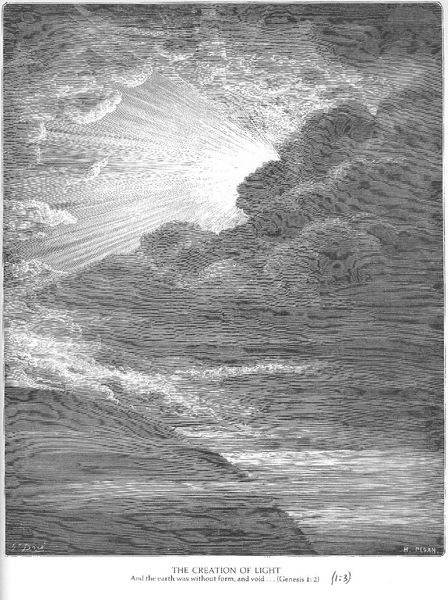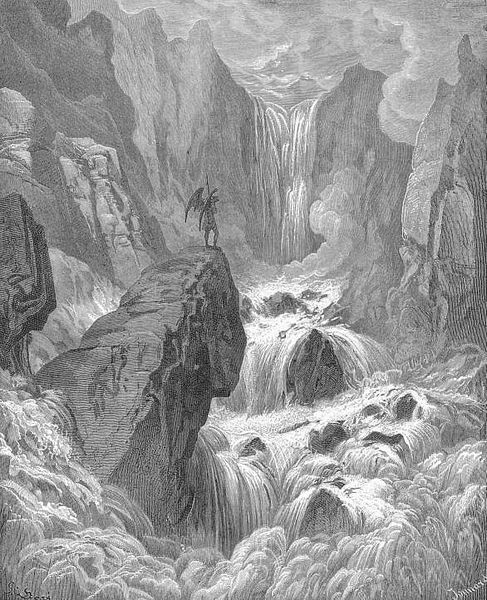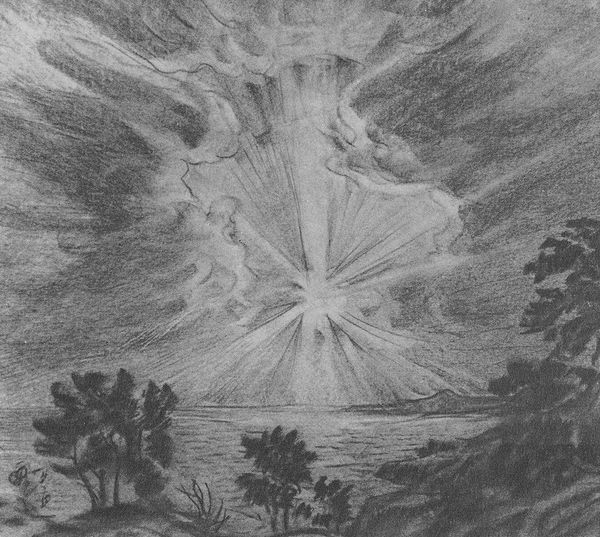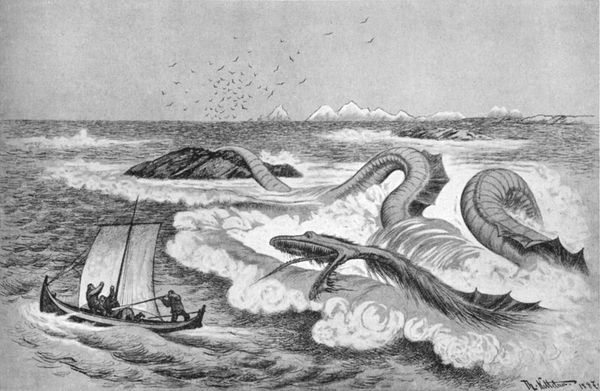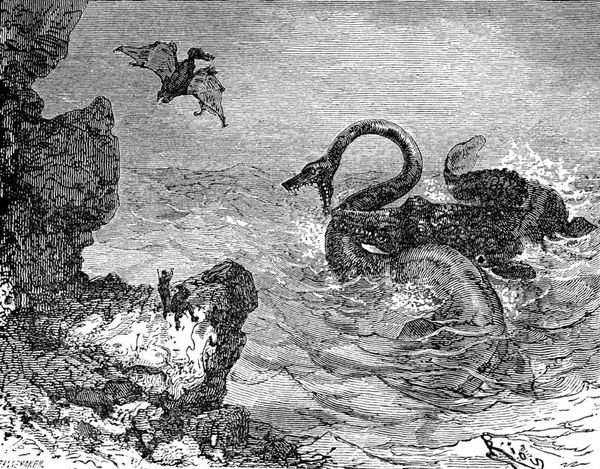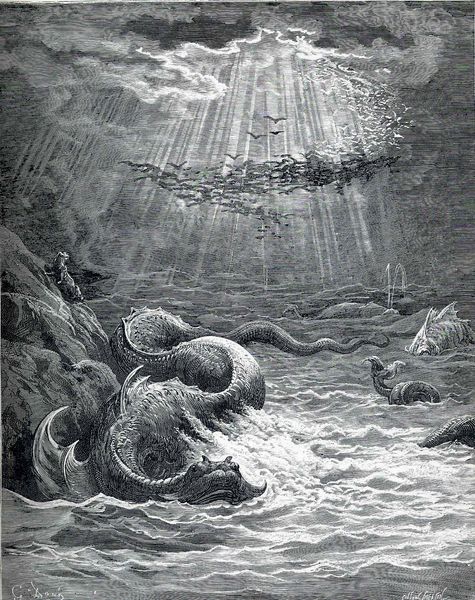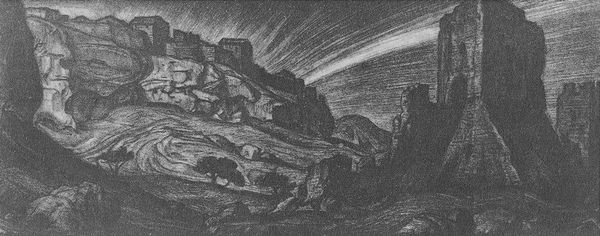
And seems a moving land and at his gills Draws in, and at his trunk spouts out, a sea
0:00
0:00
drawing, engraving
#
drawing
#
landscape
#
figuration
#
nature
#
romanticism
#
water
#
line
#
engraving
#
monochrome
Copyright: Public domain
Editor: So, this monochrome drawing, "And seems a moving land... a sea" by Gustave Dore, really strikes me. It’s all these incredibly fine lines creating this huge, almost apocalyptic landscape. What's your read on it? Curator: I'm drawn to the sheer labor embedded within the engraving process. Imagine the hours spent meticulously carving those lines into the plate. It’s more than just image-making; it's a record of physical toil. We must consider how the material realities shape our experience. Editor: I hadn’t thought about it that way. All those lines definitely convey scale, but now I'm thinking about the social position of someone doing this kind of engraving… Curator: Precisely! Who was Dore producing this for? Consider the role of illustration in 19th-century publishing, how these images democratized access to literature, yet simultaneously relied on a hierarchical system of artistic production. Think of the paper, ink, and the printing press - each element telling a story of industrial capability and mass consumption. Editor: So the image itself, beyond the mythic scene, is evidence of a whole industrial process? Curator: Exactly. The image is a commodity born from particular technologies and economic structures. This detail wasn’t made with a brushstroke; it was etched, printed, and circulated, becoming part of a network of production and exchange. The ocean seems wild, but in reality it reflects humanity’s material impact, from artistic practices to commerce. Does considering all that change the way you see the artwork? Editor: It definitely does! I guess I was only thinking about the artistic expression. Now I'm thinking of this not only a work of art but a record of industrial practice and consumption in its own right. Curator: And by extension, thinking about our consumption in the modern age of art, too.
Comments
No comments
Be the first to comment and join the conversation on the ultimate creative platform.




